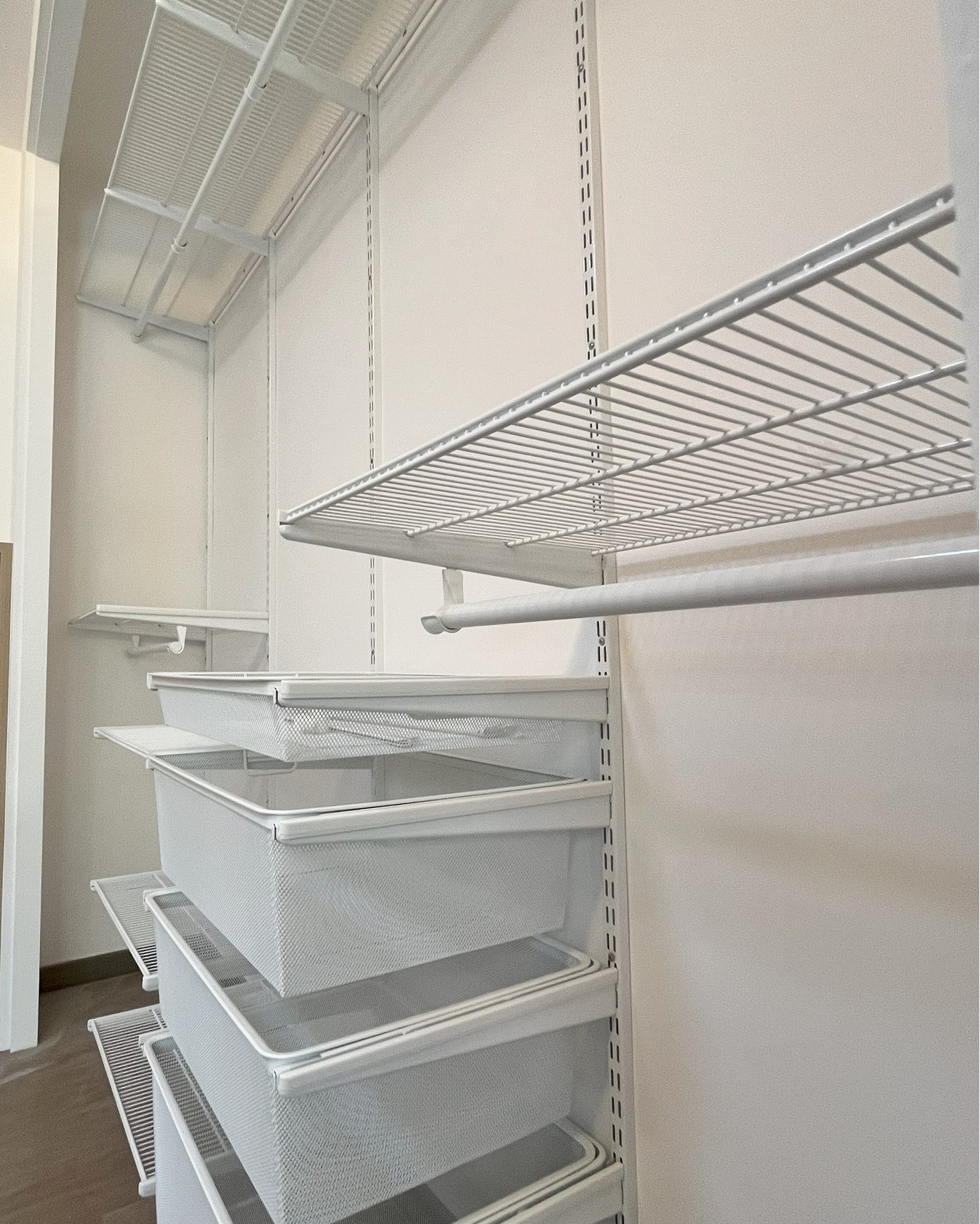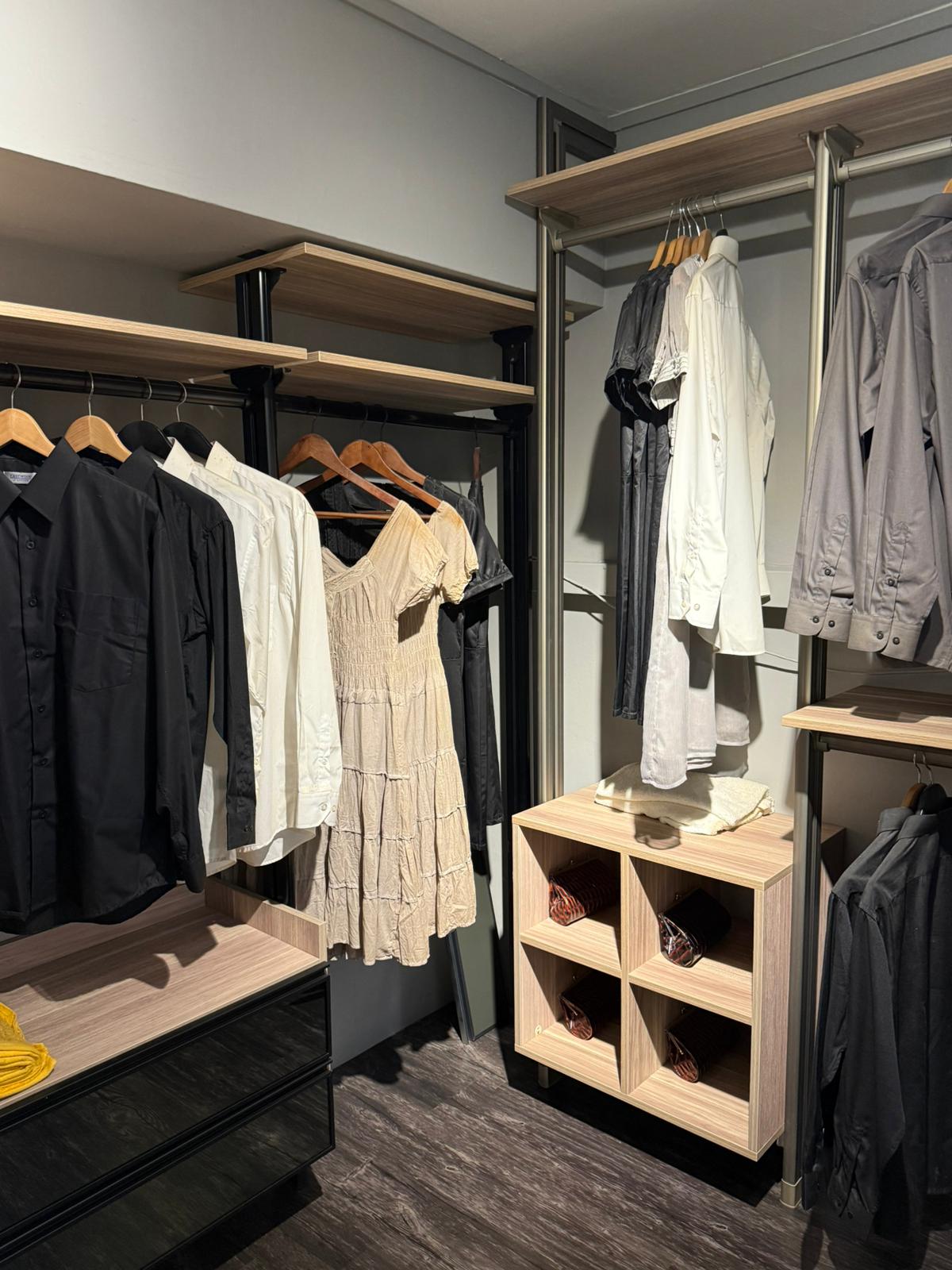TL;DR
- Aluminum cabinets outlast plywood and resist corrosion better than stainless steel in Singapore’s humid climate.
- Lightweight, modular and available in multiple finishes—ideal for HDB, BTO and condo kitchens.
- Plywood is budget-friendly with a warm look if properly sealed; stainless steel suits heavy-duty cooking but can feel cold.
Introduction
When planning a kitchen renovation in Singapore, choosing the right cabinet material is critical for durability, maintenance and aesthetics. Between aluminum kitchen cabinets, stainless steel and plywood, only one consistently excels in our humid climate, tight HDB layouts and modern design trends. This guide compares corrosion resistance, weight, lifespan and style—helping you select cabinets that look great today and last for decades.
Types of Kitchen Cabinets
In Singapore, homeowners typically choose from three main materials:
Plywood with Laminate Finish
- Pros: Warm wood look, wide range of finishes, cost-effective.
- Cons: Prone to moisture damage, formaldehyde off-gassing, requires marine-grade sealing.
Stainless Steel
- Pros: Heat-resistant, unaffected by termites or mold, industrial grade durability.
- Cons: Heavy—needs reinforced support, limited design freedom, premium pricing.
Anodized Aluminum
- Pros: Corrosion-proof, lightweight, seamless laser-welded panels, wide palette of powder-coat and woodgrain finishes.
- Cons: Slightly higher upfront cost than plywood, but lower lifecycle maintenance.
Material Comparison
| Feature | Aluminum | Stainless Steel | Plywood |
|---|---|---|---|
| Durability | Excellent—rustproof, laser-welded seams | Excellent—industrial grade | Good—depends on sealing |
| Humidity Resistance | ✅ Zero rust, zero swelling | ⚠️ Surface corrosion if scratched | ⚠️ May warp if water seeps in |
| Aesthetics | Matte, powder-coat, woodgrain transfer | Metallic only | Natural wood appeal |
| Shelf Load Capacity | Up to 100 kg per shelf | Up to 120 kg per shelf | 30–50 kg per shelf |
| Lifespan | 15–30 years+ | 20–30 years+ | 10–15 years |
| Cost | $$ (mid-premium) | $$$ (premium) | $–$$ (budget-mid) |
Benefits of Aluminum Kitchen Cabinets
- Moisture & Mold Resistance: Non-porous, rust-proof anodized surface.
- Stylish Finishes: Available in matte, powder-coat, woodgrain laminate and pastel hues.
- Modular & Lightweight: Easy to reconfigure—ideal for HDB and BTO kitchens.
- Quiet Operation: Soft-close hinges and smooth-touch surfaces minimise noise.
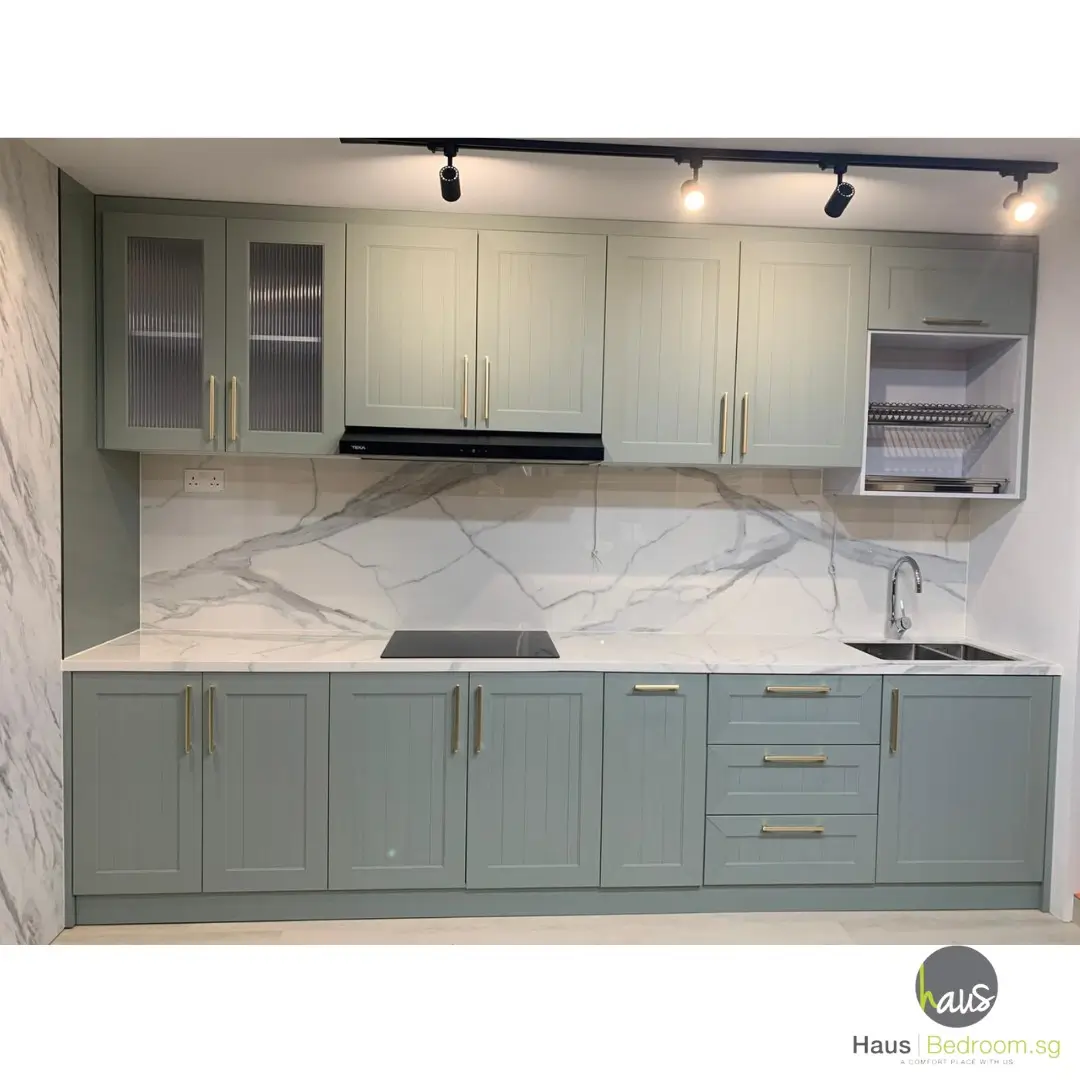

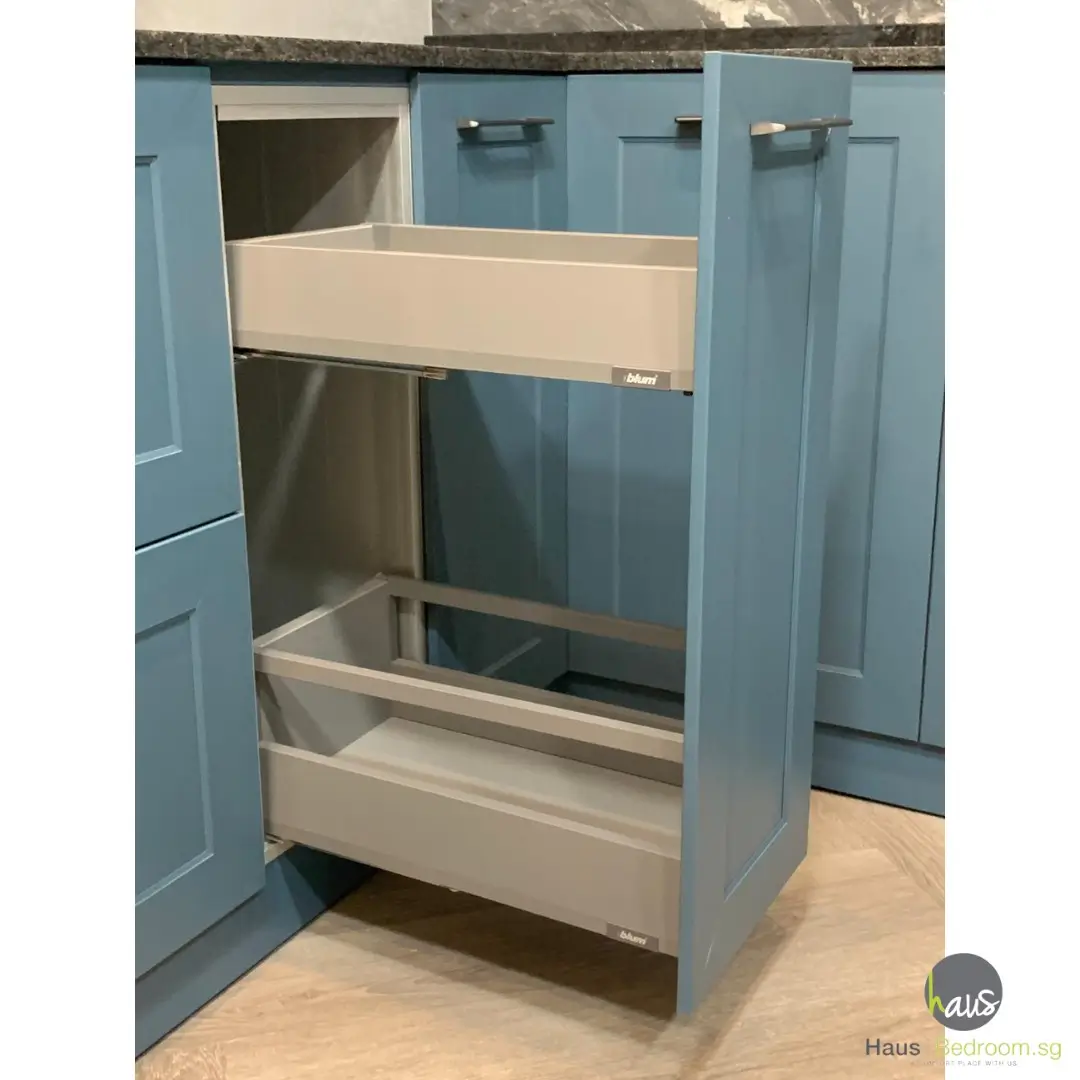
Plywood Kitchen Cabinets: Pros & Cons
Plywood remains popular for its natural warmth and affordability. Key considerations:
- Pros: Warm wood look, customisable, easy to repair.
- Cons: Vulnerable to delamination, requires marine-grade sealing.



Is Stainless Steel Worth It in 2025?
Stainless steel is prized in commercial kitchens, but in homes:
- When to choose: Frequent high-heat wok cooking, industrial aesthetic.
- Drawbacks: Cold feel, noisy, prone to fingerprints and dents.
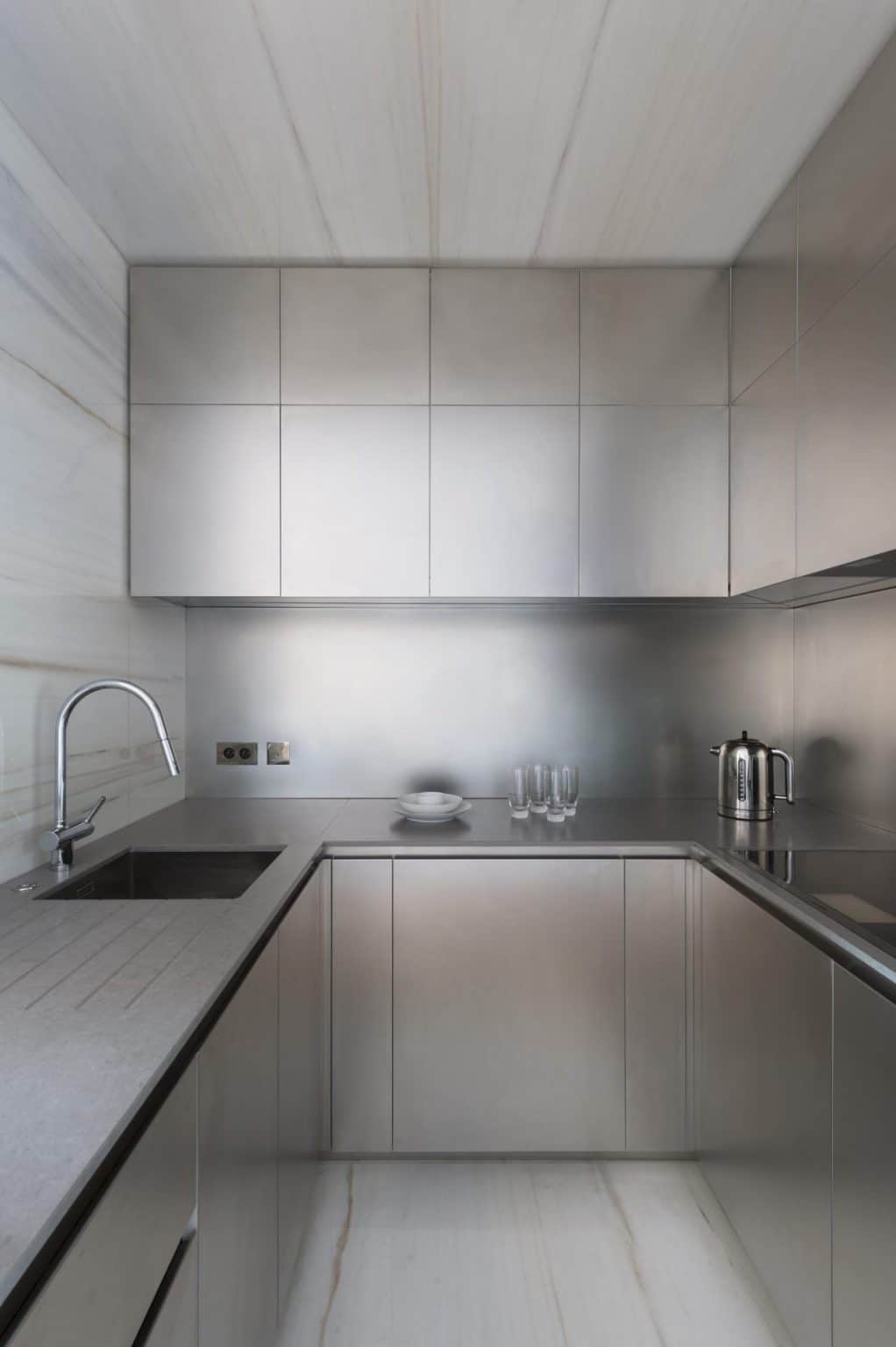
Singapore Kitchen Climate: Why Material Matters
Year-round humidity affects cabinet longevity:
- Aluminum: Zero rust, zero swelling.
- Stainless Steel: Resists mold but can corrode if surface is damaged.
- Plywood: Needs proper sealing and ventilation to prevent warp or mold.
Who Should Choose Which
| Buyer Profile | Recommended Material |
|---|---|
| Busy families, small kitchens | Aluminum |
| Budget-conscious homeowners | Plywood with marine-grade seal |
| Wok-heavy cooking households | Stainless Steel |
| Design-conscious condo dwellers | Aluminum or Plywood |
| Renovating rental units | Plywood |
Key Considerations
- Budget: Aluminum starts mid-tier, plywood is budget-friendly, stainless is premium.
- Design Language: Match aluminum or plywood to your feature walls and wardrobes.
- Lifespan Expectations: Aluminum lasts 15–25 years, plywood 10–15 years.
- Maintenance: Aluminum is virtually maintenance-free; plywood and steel need periodic care.
- Layout Constraints: Modular aluminum and plywood adapt well to tight or irregular spaces.
Frequently Asked Questions
- Why are aluminum kitchen cabinets better for Singapore’s climate?
- High humidity, heat and termites accelerate wood damage. Anodized aluminum resists all three with zero swelling or corrosion.
- How do I clean and maintain aluminum cabinets?
- Wipe with a soft cloth and mild detergent solution, avoid abrasives. Rinse and dry to preserve powder-coat finish.
- Are aluminum cabinets formaldehyde-free?
- Yes—laser-welded panels require no glues or adhesives, ensuring zero VOC off-gassing.
- Can I retrofit existing kitchens with aluminum panels?
- Absolutely—aluminum modules can be installed over existing carcasses with minimal structural changes.
Maintenance & Care
- Use mild, non-acidic detergents and a soft cloth for daily cleaning.
- Keep hinges and runners free of debris and lubricate quarterly.
- Avoid dropping heavy objects—panels can dent under extreme impact.
- Promptly wipe up spills to prevent buildup around seams and joints.
Conclusion
In summary, aluminum kitchen cabinets deliver unmatched corrosion resistance, lightweight modularity and contemporary finishes—making them the top choice for Singapore homes. Plywood offers warmth and affordability when properly sealed, while stainless steel suits heavy-duty cooking but can feel cold and require more upkeep. Ready to upgrade? Book a free consultation to explore aluminum cabinet samples and layout ideas tailored to your HDB or condo.
